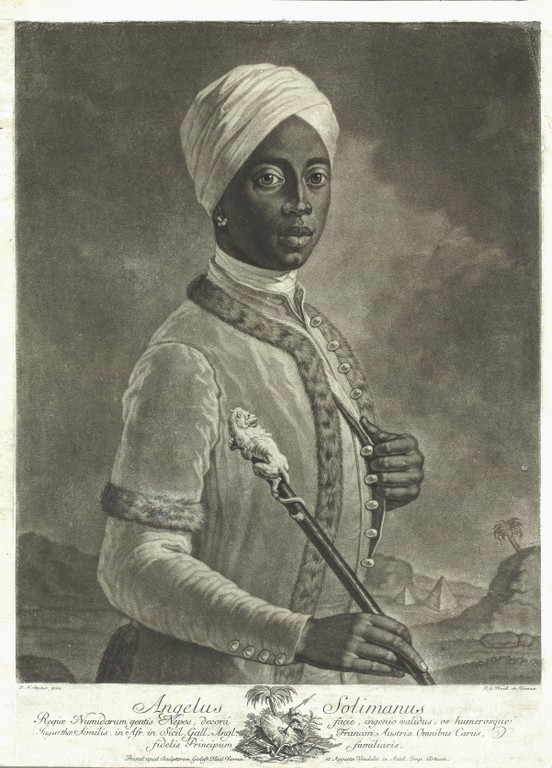
Angelo Soliman was born Mmadi-Make around 1721. We can only speculate as to where in sub-Saharan Africa he came from, but we know that he came from a non-Christian, most likely Muslim, family and was kidnapped and taken into slavery at the age of eight. He was taken to North Africa and then Sicily, where he was sold to the Austrian Field Marshall Prince Lobkowitz. Soliman became a soldier in his service and a very trusted advisor. After the death of Lobkowitz in 1753 we find Soliman in Vienna in the service of Prince Liechtenstein, who made him his chamberlain and entrusted him with the education of his children. Beyond the Prince’s household, Soliman moved in enlightened circles and was well-known around town. He was a Freemason for five years, rising to the position of Grand Master of his lodge and writing rules that re-shaped Freemasonry across Europe. He became an associate of figures like Wolfgang Amadeus Mozart and Joseph Haydn and was friendly with Emperor Joseph II.
Soliman was both a prominent figure in Vienna and an exotic showpiece, as can be seen in his portrait. We see Soliman dressed in an exotic, fur-lined coat and turban and standing before an exoticized Egyptian landscape. The text invents a royal lineage for him and compares him with Jugurtha, a north African king who challenged Rome in the second century BCE, thereby creating prestige that transferred to his Prince.
But as much as Soliman’s life reflects the possibility of Black people integrating into European society, what happened to him after his death also reflects a shift to a new age of racialized degradation as Black bodies became objects of a spectacular gaze wrapped up in scientific pretensions. Over the energetic objections of Soliman’s daughter Josephine, Emperor Francis II took possession of his corpse and had it stuffed and dressed as a “savage” with ostrich feathers and shells. The body was then displayed along with two other Africans and exotic animals in his cabinet of curiosities, where it remained until the building was burned down in the 1848 revolution.
Jeff Bowersox
deutsch
Source: Gottfried Haid (based on an engraving by Johann Nepomuk Steiner), Angelus Solimanus (ca. 1750). Via Wikimedia Commons.

Angelo Soliman (ca. 1721-1796) by Jeff Bowersox is licensed under a Creative Commons Attribution-ShareAlike 4.0 International License.
Permissions beyond the scope of this license may be available at https://blackcentraleurope.com/who-we-are/.